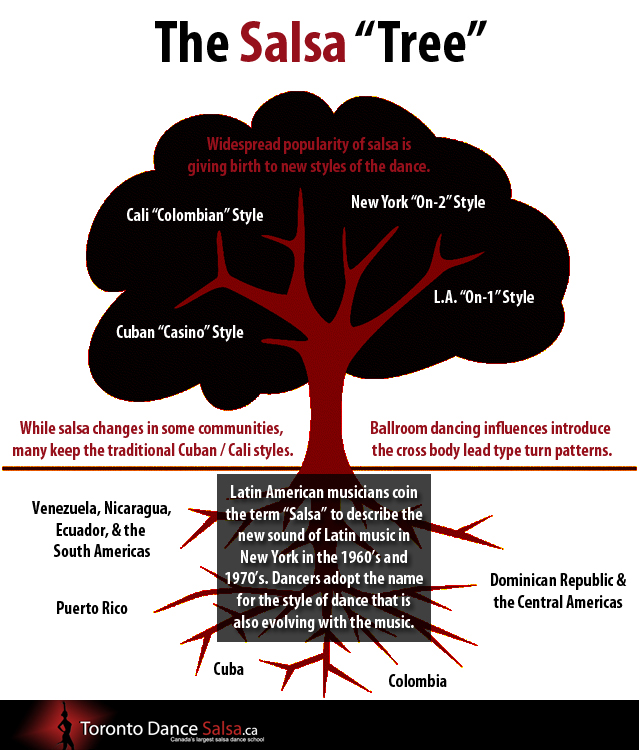Some Known Incorrect Statements About Dance Fridays
Wiki Article
The Dance Fridays Statements
Table of ContentsDance Fridays for BeginnersGetting The Dance Fridays To WorkThe 3-Minute Rule for Dance FridaysDance Fridays Fundamentals ExplainedThe smart Trick of Dance Fridays That Nobody is DiscussingThe Facts About Dance Fridays RevealedOur Dance Fridays Statements
The significant difference that differentiates the Miami-style from other North American designs is the "Atras" or "Angled", back breaking steps executed backwards diagonally as opposed to moving forwards and in reverse as seen in the New York design. Dancers do not shift their body weight substantially as seen in other styles. Instead, professional dancers maintain their top body still, poised and loosened up, concentrating on foot movement.A significant distinction in between Cali Design and Miami-style is the last is specifically danced on the downbeat (On1) and has aspects of lusters and show-style included to it, complying with collections of North American styles. Miami-style has numerous adherents, particularly Cuban-Americans and various other Latinos based in South Florida.
Several of the steps include quickly swapping companions. "Rueda de Miami" stemmed in the 1980s from Miami, is an official design with lots of policies based on a mix, and is a hybridization of Rueda de Cuba & North American dancing styles, with some regimens reflecting American society (e.
Coca-Cola, Dedo, Adios) which is not found in the traditional Cuban-style Standard (salsa dancing club san francisco). Cali is also known as the "Resources de la Salsa" (Salsa's Capital); due to salsa music being the main category in events, bars and events in the 21st century.

Rumored Buzz on Dance Fridays
They include numerous acrobats such as partnered flips to entertain with these jaw going down stunts. Their maneuvering is elaborate and precise, aiding several Colombian Style dancers win significant globe championships. Cali hosts many annual salsa occasions such as the World Salsa Cali Event and the Encuentro de Melomanos y Coleccionistas.Researchers in the all-natural scientific researches researched the math of salsa dancing steps. In the social scientific researches, scientists have examined salsa dancing to recognize, for example how the Latino identity is linked to salsa dance.
Centro Journal. Retrieved 2023-05-26. Salsa Vida.
Salsa Vida. 26 June 2023. Gotten 5 October 2023.

Recovered 2019-06-26. Waxer, Lise Aerinne (2002 ). The city of musical memory: salsa, document grooves, and pop culture in Cali, Colombia. Music/culture. Middletown, Conn: Wesleyan College Press. ISBN 978-0-8195-6441-2. " Colombian Style Salsa". Salsa Vida SF. Recovered 27 July 2020. von Renesse, Christine; Ecke, Volker (2011-03-01). " Maths and Salsa dancing". Journal of Maths and the Arts.
doi:10. 1080/17513472. 2010.491781. ISSN 1751-3472. S2CID 120939987. Dormani, Carmela Muzio (2020-07-07). " So You Assume You Can Salsa: Executing Latinness on Fact Dancing Tv". The Journal of Pop Culture. 53 (3 ): 720738. doi:10. 1111/jpcu. 12929. ISSN 0022-3840. S2CID 225829802. Hewer, Paul; Hamilton, Kathy (2010-03-29). best site " On feelings and salsa: some thoughts on dance to reassess consumers".
Not known Facts About Dance Fridays

54 (5 ): 9991024. doi:10 - salsa dancing club san francisco. 1108/EJM -08 -2018 -0565. ISSN0309-0566. S2CID216399732.
Something failed. Wait a moment and attempt again Try again.
Get This Report about Dance Fridays
We're speaking concerning the dancing, not the scrumptious South American spice. The beginnings of words "Salsa" as the name of a dance has actually provided discussion for decades. The most preferred (and potentially accepted) theory is that Cuban and Puerto Rican artists in New York coined the phrase in New York in the 1970's, to define the spicy combination of music they were developing out of the rhythms and motifs of Cuban child montuno, guaracha, chachacha, mambo and bolero.Report this wiki page